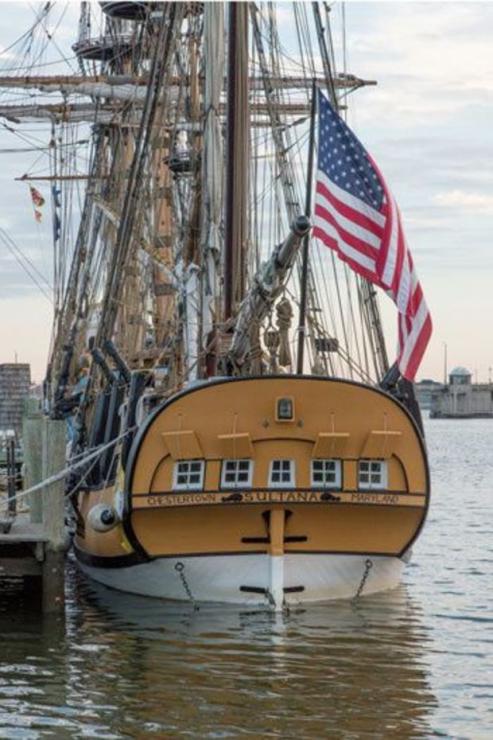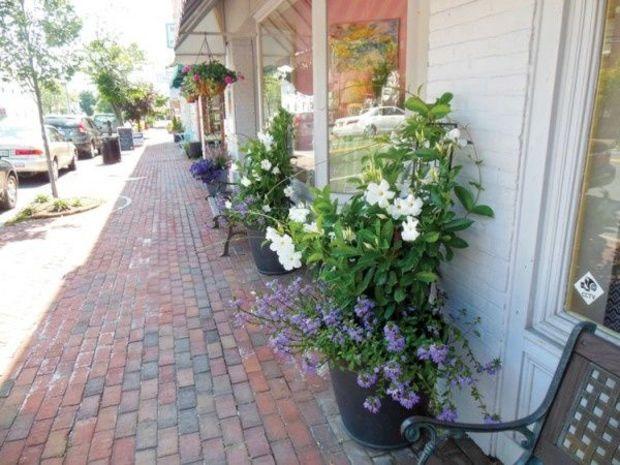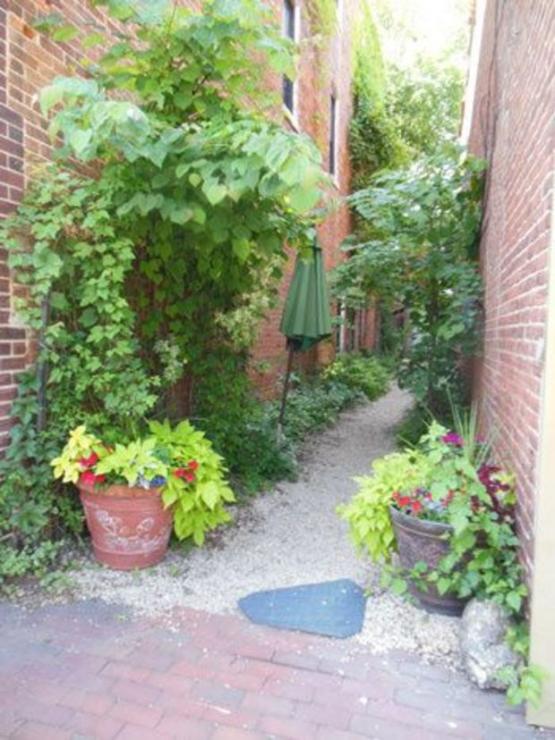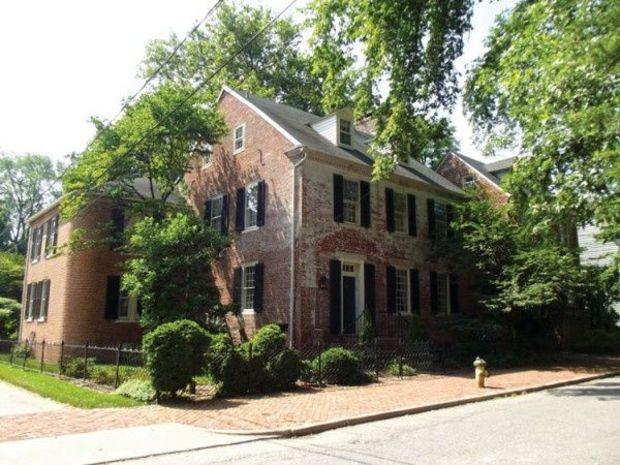Some people will say that there are five great rivers that flow into the Chesapeake Bay: the Susquehanna, Potomac, Rappahannock, York, and James. I beg to differ. There are a dozen great rivers that empty into the Chesapeake. Each one of them has its own character. From the broad waters of the underutilized Potomac with its small towns and many secluded anchorages, to the deep, tea-colored, winding cypress lined Pocomoke, each river is distinctly different. The Chester River is a beautiful river in its own right, but the jewel in its crown is Chestertown.

The Chester River in mid July was quiet with almost no boat traffic. It meanders into the heart of the Eastern Shore. Interesting vignettes are found at each corner as you round the river bend to see a farm field rolling down to the water’s edge or a stately manor, reminding you that this river was once the main street and commercial highway for the Eastern Shore. The anchorages along the Chester could fill a cruising guide in their own right. Last summer, we hid from Tropical Storm Arthur in Queenstown Creek. In the following week we only had time to sample Cacaway Island and Davis Creek off Langford Creek and the ever popular Corsica River. All of these lovely anchorages were prelude to visiting Chestertown some 24 miles up this bucolic river.

Approaching Chestertown, the spars of the topsail schooner Sultana rose above the trees as she sat in her berth on the town waterfront. Having a traditional schooner docked along the waterfront reinforced the colonial appearance of the town. For 300 years, the colonial homes that face the river have been welcoming sailors and watching vessels arrive and depart for ports unknown. Once the largest city on the Eastern Shore, Chestertown has remained static in size.
Chestertown’s population has been more stable than other towns, in part perhaps due to its stature as the county seat. It is also a college town. Washington College founded in 1782 is the 10th oldest college in the United States. George Washington gave a sizeable donation to the College at Chester and gave to the school permission to use his name.
The Chestertown Marina is in the heart of town. It is not a big facility, so you should plan ahead if you want to take a slip. We chose to anchor along the far shore in front of the town. There are a couple of important considerations if you are going to anchor here. There are reversing currents; four times per day you are likely to swing around as the tides come and go. Be sure you have set your anchor well. To get out of the peak current, try to anchor as close as practical to the far shore of the river. On the eastern side of the river, the bottom rises abruptly from ten or 12 feet to six feet or less. When you anchor be sure that your anchor scope does not allow you to swing onto the shallows. The charts show a cable crossing area near the bridge in which you may see boats anchored, but in this soft bottom your anchor could bury as much as six feet into the mud. You might want to avoid anchoring in the cable area.
Shore access from the anchorage is simple. There is a landing at the foot of High Street and another floating dinghy dock landing at the marina at the foot of Cannon Street. Once ashore you will feel transported back 300 years, save for the 21st century automobiles. Immediately after landing ashore on Water Street, we turned inland up High Street where many of the most recognized colonial buildings still stand. Walking up the ancient brick sidewalks, shaded from the July sun by large trees, we began our exploration.
There is no other town on the Chesapeake with a more authentic original colonial appearance than Chestertown; it’s second only to Annapolis for the number of colonial buildings still in use. Almost all the buildings in the center of Chestertown are original brick Georgian-style, which was popular until the early 1800s, or the Federal style, which was typical of the architecture immediately after the Revolutionary War.

In the blocks surrounding the village center, the homes are beautifully painted wood homes reminiscent of Charleston, SC. Architectural styles came and went with the passage of the years, and all left a mark on Chestertown. The town is unique in that by fate or luck, nearly all the historic buildings have remained in use. Mature trees shade the streets of the town. Planters full of flowers grace many of the front stoops and alleyways. The effect is an attractive landscaped streetscape not unlike Williamsburg.
Walking up High Street we were struck by the variety of stores. The downtown buildings are all occupied. There are no vacant store fronts. There is a music store where you can buy a piccolo. Are you pastels or watercolor paints running low? You may find an art supply store with everything you need. There are an old fashioned shoe store (not a chain) and numerous interesting clothing and gift stores and an indie book store. If you are looking for a nice restaurant, the town boasts a wide selection catering to a wide variety of tastes, from an authentic pub to elegant dining at the Imperial Hotel. While many Eastern Shore towns are coming back, Chestertown is a village that never left.
It has its ups and downs, but perhaps because it is a college town and has been the county seat for 300 years, it has survived and thrived. All in all, you cannot help but be swept up in the beauty, character and history of Chestertown. Your first cruise up the Chester River will not be your last.
